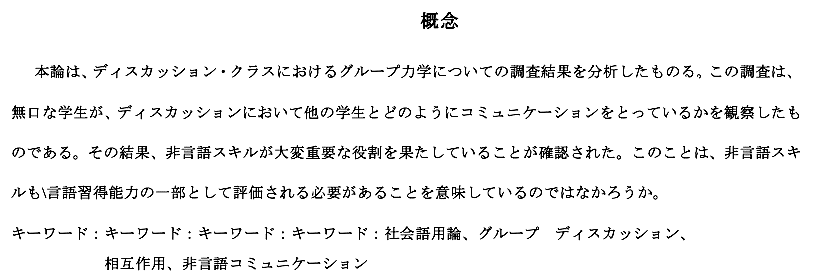May. 10 - 11, 2008. Kyoto, Japan: Doshisha University Shinmachi Campus. (pp. 27 - 35)
The role of the passive participator: Investigating “silent” group membersby Christine Wilby (Obirin University Japan) |
| Abstract |
|
This data-driven paper presents some of the results of a series of investigations into the discussion dynamics of a group of Japanese EFL learners in a discussion strategies class, in which special attention is focused on the seemingly non-participating member who is neither reticent nor without verbal skills, and yet who rarely actually speaks. The investigation first identifies the target member, and then through further research shows how this member is in fact fully functioning in the discussion using sophisticated NVC (Non Verbal Communication) skills. The findings indicate the interaction of a discussion is as important as the speaking itself, and implications for EFL discussions as activities of language acquisition and testing are considered. Keywords: Socio-pragmatics, group discussions, non-verbal communication, and classroom interactions  |


